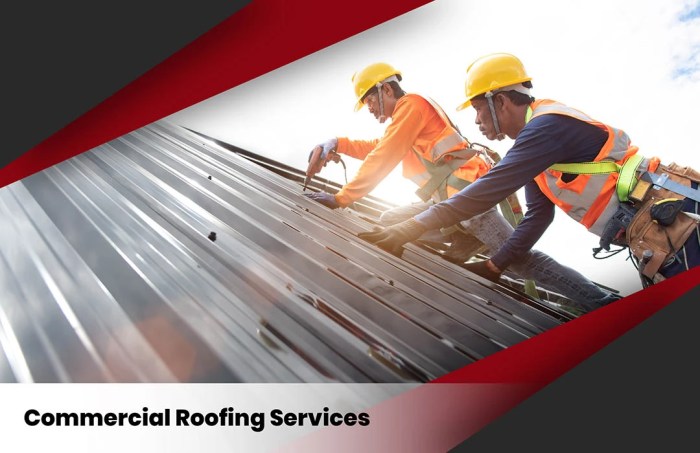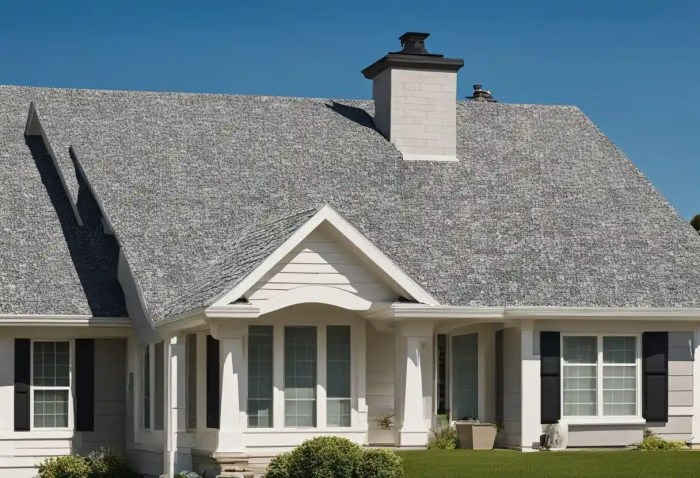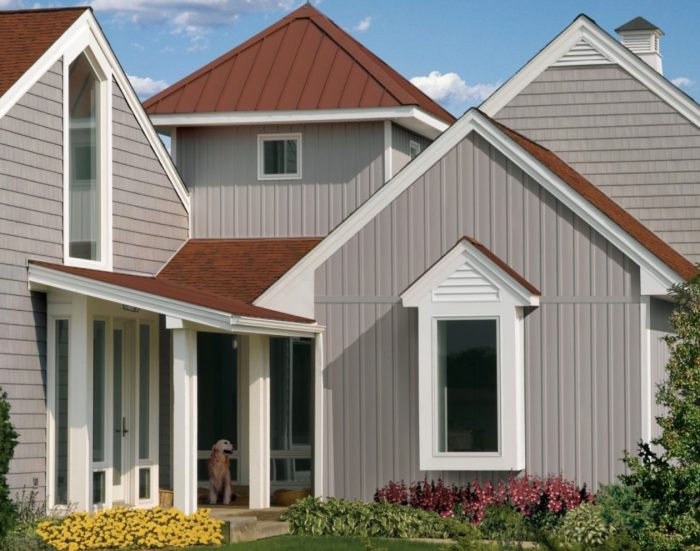The Ultimate Guide to Commercial Siding and Roofing Services
Commercial siding and roofing services play a pivotal role in the structural integrity and visual appeal of commercial buildings. From ensuring energy efficiency to enhancing aesthetics, these services are essential for maintaining a functional and attractive property. In this comprehensive guide, we delve into the importance of commercial siding and roofing, explore different materials and roofing systems, and provide valuable tips for hiring the right contractors.
Let's uncover the key aspects of commercial siding and roofing services together.
Importance of Commercial Siding and Roofing Services

Proper siding and roofing are essential for commercial buildings as they play a crucial role in protecting the structure from external elements and ensuring the safety of occupants. Quality siding and roofing materials can significantly impact the energy efficiency of a building by providing insulation and reducing heat loss or gain.
Impact on Energy Efficiency
- Quality siding and roofing materials act as a barrier against heat transfer, helping to maintain a comfortable indoor temperature and reducing the reliance on heating and cooling systems.
- Properly installed siding and roofing can prevent air leaks and moisture infiltration, which can lead to energy wastage and potential damage to the building's structure.
- Energy-efficient siding and roofing solutions can help lower utility bills and decrease the carbon footprint of a commercial building, contributing to a more sustainable environment.
Enhancing Aesthetics
- Commercial siding and roofing services can enhance the overall appearance of a building, improving its curb appeal and creating a positive impression on clients, customers, and visitors.
- Modern siding materials come in a variety of colors, textures, and styles, allowing for customization that can complement the architectural design and branding of a business.
- Well-maintained siding and roofing can increase the value of a commercial property and attract potential tenants or buyers who appreciate a well-kept and visually appealing building.
Types of Commercial Siding Materials
Commercial buildings often utilize a variety of siding materials to protect and enhance their exterior appearance. These materials can vary in terms of durability, cost-effectiveness, and visual appeal. Let's explore some common types of commercial siding materials.
Vinyl Siding
Vinyl siding is a popular choice for commercial buildings due to its affordability and low maintenance requirements. It is available in a wide range of colors and styles, making it versatile for different architectural designs. While vinyl siding may not be as durable as other materials, it can provide a cost-effective solution for many businesses.
Fiber Cement Siding
Fiber cement siding is known for its durability and resistance to fire, moisture, and pests. It is a low-maintenance option that can mimic the look of wood, stucco, or masonry. Though it may be more expensive upfront, the long-term savings from reduced maintenance costs can make fiber cement siding a worthwhile investment for commercial properties.
Metal Siding
Metal siding, such as steel or aluminum, offers excellent durability and can withstand harsh weather conditions. It is often used in industrial and modern commercial buildings for its sleek appearance and longevity. While metal siding may have a higher initial cost, its durability and energy efficiency can lead to long-term savings for businesses.
Wood Siding
Wood siding provides a classic and natural look to commercial buildings, adding warmth and charm. Cedar and redwood are popular choices for their natural resistance to decay and insects. However, wood siding may require more maintenance compared to other materials, such as regular painting or staining to prevent weathering.
Brick Siding
Brick siding is a timeless and durable option for commercial buildings, offering a traditional and elegant appearance. It is resistant to fire, pests, and rot, making it a long-lasting choice. While brick siding may have a higher upfront cost and require professional installation, its durability and aesthetic appeal can add value to a property over time.These are just a few examples of the types of commercial siding materials available in the market.
Each material has its own unique characteristics, benefits, and considerations that businesses should take into account when selecting the most suitable option for their property.
Common Roofing Systems for Commercial Buildings
Commercial buildings require durable and reliable roofing systems to protect the structure from the elements. There are several types of roofing systems commonly used for commercial properties, each with its own unique characteristics and maintenance requirements.
Flat Roofing Systems
Flat roofing systems are a popular choice for commercial buildings due to their cost-effectiveness and ease of installation. These systems require regular maintenance to prevent water ponding and leakage. Maintenance tasks include regular inspections, clearing debris, and repairing any damaged areas.
Metal Roofing Systems
Metal roofing systems are known for their longevity and durability, making them a sustainable choice for commercial buildings. These systems require minimal maintenance, with occasional inspections to check for any signs of corrosion or loose fasteners. Proper installation is crucial to ensure the longevity of a metal roof.
Green Roofing Systems
Green roofing systems are becoming increasingly popular in commercial buildings due to their environmental benefits. These systems require regular maintenance to ensure the health of the plants and proper drainage. Maintenance tasks include watering, weeding, and inspecting the waterproofing membrane.
Sustainable Roofing Materials
Using sustainable roofing materials, such as solar panels or cool roofs, can help improve energy efficiency and reduce environmental impact. These roofing systems require specialized maintenance to ensure optimal performance and longevity. Regular inspections and cleaning are essential to maximize the benefits of sustainable roofing materials.
Hiring Commercial Siding and Roofing Contractors
When it comes to commercial projects, hiring the right siding and roofing contractor is crucial for the success of the project. Here are some steps and tips to consider when selecting a reputable contractor.
Checking Licenses, Insurance, and Certifications
It is essential to verify that the commercial siding and roofing contractor you are considering has the necessary licenses, insurance, and certifications. This ensures that they are qualified to perform the work and protects you in case of any issues during the project.
- Check for a valid contractor's license to operate in your state or local area.
- Ensure that the contractor has liability insurance and workers' compensation coverage to protect you from any accidents or damages that may occur on-site.
- Verify if the contractor holds any certifications from manufacturers of siding and roofing materials, as this indicates their expertise and knowledge in the field.
Negotiating Contracts and Ensuring Quality Workmanship
Negotiating a contract with a commercial siding and roofing contractor is an important step in setting expectations and ensuring quality workmanship. Here are some tips to keep in mind:
- Clearly Artikel the scope of work, timeline, and payment schedule in the contract to avoid any misunderstandings later on.
- Discuss the materials to be used and the quality standards that should be met during the project.
- Include provisions for any potential changes or additional work that may arise during the project, and how they will be addressed in terms of cost and timeline.
- Regularly communicate with the contractor to address any concerns or issues that may arise during the project and ensure that the work is being done according to the agreed-upon terms.
Final Thoughts
As we conclude our exploration of commercial siding and roofing services, it becomes evident that these elements are not just functional necessities but also design opportunities. By investing in quality materials, sustainable practices, and reputable contractors, commercial properties can achieve longevity, efficiency, and visual appeal.
Whether you're a property owner, developer, or contractor, understanding the nuances of commercial siding and roofing services is essential for successful projects and lasting impressions.
Commonly Asked Questions
What are the benefits of using sustainable roofing materials?
Using sustainable roofing materials can reduce energy costs, minimize environmental impact, and increase the overall lifespan of the roof. Additionally, it can enhance the property's eco-friendly credentials.
How can I ensure quality workmanship for my commercial siding project?
To ensure quality workmanship, it's crucial to thoroughly vet potential contractors, check their references, and inspect previous projects. Clearly Artikel your expectations in the contract and conduct regular site visits to monitor progress.
What are the common maintenance requirements for commercial roofing systems?
Common maintenance tasks include regular inspections for damage, cleaning of gutters and drains, repairing leaks promptly, and ensuring proper ventilation in the attic space. Following a proactive maintenance schedule can extend the lifespan of the roof.




